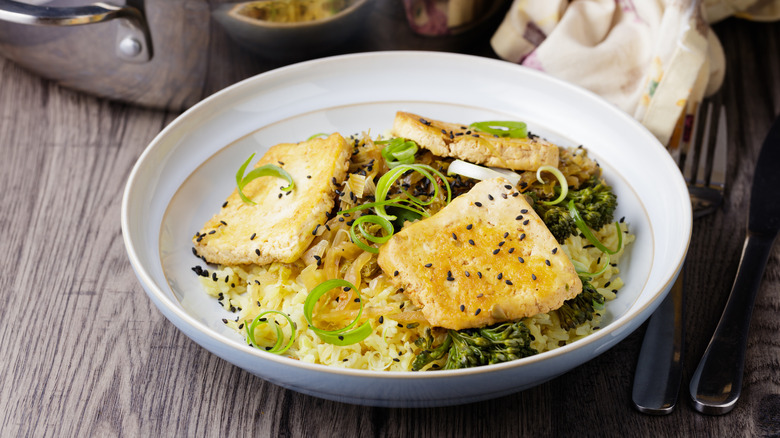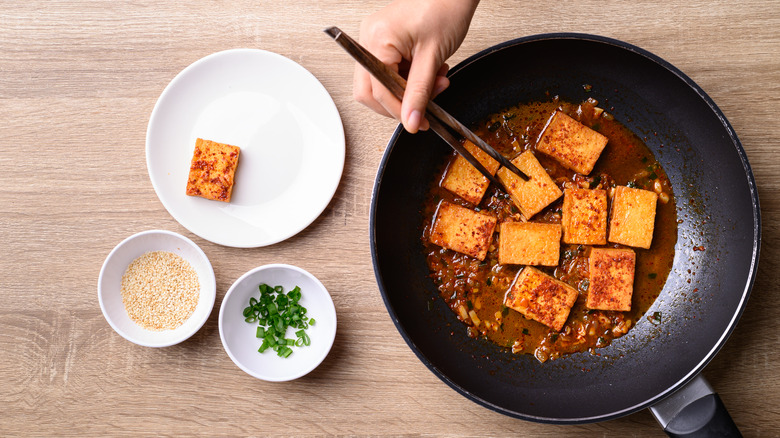The Braising Tip To Ensure Your Plant-Based Meat Doesn't Dry Out
Although some plant-based meats may taste suspiciously like the real thing, preparing them doesn't take the same process. These meat substitutes are typically made from pea or soy proteins and must be cooked slightly differently. Without altering the cooking method based on the ingredient you're using, you won't get the same juicy, tender results as you would with real meat.
When it comes to braising, the same long, slow simmering process doesn't apply to plant-based meat. Although any type of meat can be braised, the technique is best use as a tenderizer on tougher cuts of meat.
Plant-based meat contains less fat, which causes it to dry out quickly. Braising can last for up to three hours and at that rate, plant-based meat would overcook. When braising plant-based meat, it's best to shorten its cooking time to maintain moisture and ensure that it's perfectly cooked.
How to braise plant-based meat for the best results
With braising working best on tougher meats, opt for firmer blocks of tofu. The harder variety won't fall apart when braised and or pan-fried. Drain moisture from the tofu by microwaving the block in 30-second increments and pressing the water out with a paper towel. Once the block of tofu is moisture-free, slice the tofu into bite-sized pieces.
Add oil to a hot pan and sear the tofu, flipping it until each side is golden brown. At this stage of the braising process, you would add your liquid and allow the meat to simmer in it. However, plant-based meat is softer, so set it aside while the liquid cooks. Toss in chopped onions, garlic, and ginger, and allow the flavors to release. Once your aromatics are browned and fragrant, pour the liquid in, followed by your choice of herbs, and let everything simmer.
Before the sauce starts to thicken, add the plant-based meat back in. Let it cook for around five more minutes and then serve.

